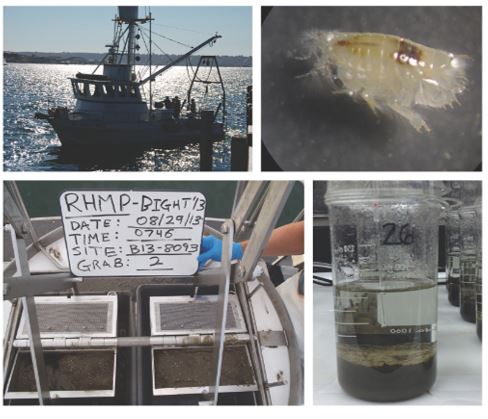Bight ’13 toxicity data suggest sediment quality is improving

Sediment toxicity testing conducted as part of the 2013 Southern California Bight Regional Monitoring Program has revealed evidence of continuing improvement to sediment quality, according to the findings of the Bight ’13 Sediment Toxicity Report that is out for final review.
More than 88% of Bight sediments were found to be nontoxic, and most of the toxicity detected was of low severity.
In particular, bays and estuaries – traditionally the locations of greatest impact – showed a continuing trend of toxicity improvement relative to past Bight surveys.
While the toxicity report provides evidence of improving sediment quality, the toxicity data alone are not sufficient to provide conclusive evidence. That’s because sediment quality assessments are based on three measures of condition; data analysis for these other two measures – chemistry and benthic macrofaunal community composition – is ongoing.
The Bight ’13 Sediment Toxicity Report, set to be published in August, will be the first in a series of Bight ’13 technical reports that will be issued over the next few years.
The toxicity report incorporates data from six toxicity testing laboratories, including those of four SCCWRP member agencies, which tested a combined 232 samples collected from bays, estuaries, the offshore shelf and submarine canyons.
Toxicity was measured using two methods: survival of sediment-dwelling amphipods, and development of mussel embryos.
Among the key changes made for Bight ’13 toxicity data collection was expanding sampling into submarine canyons for the first time. The data revealed that these canyon sediments had a much greater extent of toxicity (16% of area) compared to surrounding shelf sediments (<2%).
The likely cause and significance of this result will be determined once the Bight ’13 sediment chemistry and biology analyses are completed.
For more information about the Bight sediment toxicity results, contact Steve Bay.
More news related to: Regional Monitoring, Sediment Quality